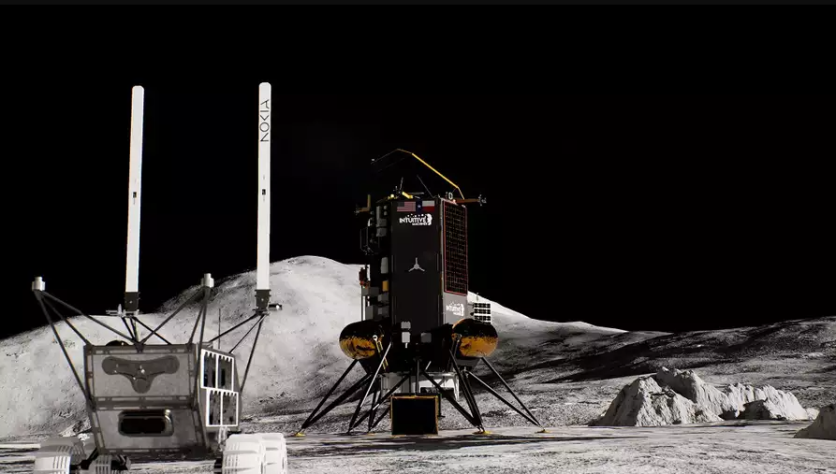Nokia is entering previously unexplored territory for telecom giants: the moon. In a groundbreaking move, Nokia plans to launch an LTE/4G network on the lunar surface by late 2024, marking a major step forward in space communications technology.
This effort, part of NASA's Tipping Point program, aims to establish the first-ever cellular network on the moon to support future lunar missions, including NASA's Artemis program, which seeks to establish human operations on the moon to prepare for future trips to Mars.

Nokia pioneers lunar connectivity, launching an LTE network on the moon by late 2024, supporting NASA's Artemis program and future lunar missions.
Nokia to Launch First LTE Network on the Moon
The Finnish company tells us that the mission's hardware is scheduled to launch late this year as part of the Intuitive Machine's IM-2 mission, which is anticipated to land at the moon's south pole.
Nokia's equipment, likened to a "network in a box," will play an important role in connecting various lunar vehicles, including Intuitive Machines' Nova-C lunar lander, Lunar Outpost's MAPP rover, and Intuitive Machines' Micro-Nova hopper.
Nokia's lunar network will consist of an LTE Base Station with integrated Evolved Packet Core (EPC) functionalities, LTE User Equipment, RF antennas, and high-reliability operations and maintenance (O&M) control software. These components have been meticulously designed to meet stringent size, weight, and power constraints for space payloads.
The mission's objectives are clear: to establish the first LTE/4G network on the lunar surface and verify its performance over several weeks.
This will involve testing the equipment's resilience to environmental stresses, including launch and landing procedures, as well as the harsh conditions of space and the lunar surface, such as temperature, vacuum, and radiation.
How the Technology Will Benefit Space Travel
LTE/4G technology was chosen for its well-established performance in terrestrial networks, scalability, and defined path to 5G.
The network will provide critical communication capabilities for future lunar missions, including voice and video communications, telemetry, biometric data exchange, sensing applications, and robotics control.
Thierry E. Klein, President of Bell Labs Solutions Research at Nokia, emphasized the importance of connectivity and communications for sustained human presence on the Moon and Mars.
"LTE/4G is well-established in terrestrial networks, provides excellent performance and economies of scale, and meets the initial mission requirements. Also, LTE/4G has a well-defined path to 5G," Klein stated.
While the prospect of a lunar cellular network holds immense promise, it also raises certain challenges and concerns. Space.com reports that radio astronomers worry that the network could create radio frequency interference (RFI) that disrupts radio observations.
However, there is hope that operators like Nokia could protect certain frequencies, ensuring that radio observatories can continue their work undisturbed.
Looking ahead, the Nokia's lunar network could soon extend far beyond the moon. The network's adaptability means that it could eventually be deployed on Mars, paving the way for enhanced communication capabilities on the Red Planet.
Stay posted here at Tech Times.

ⓒ 2025 TECHTIMES.com All rights reserved. Do not reproduce without permission.




